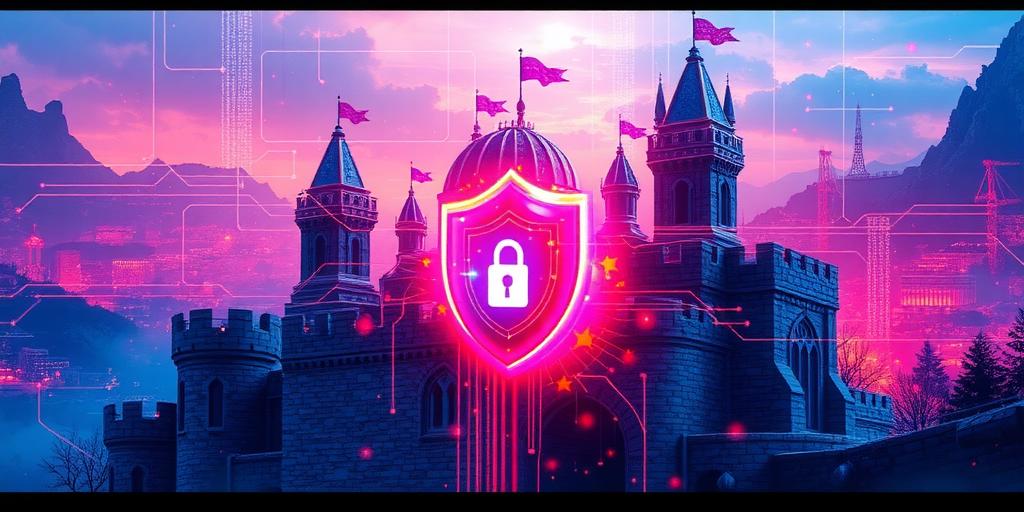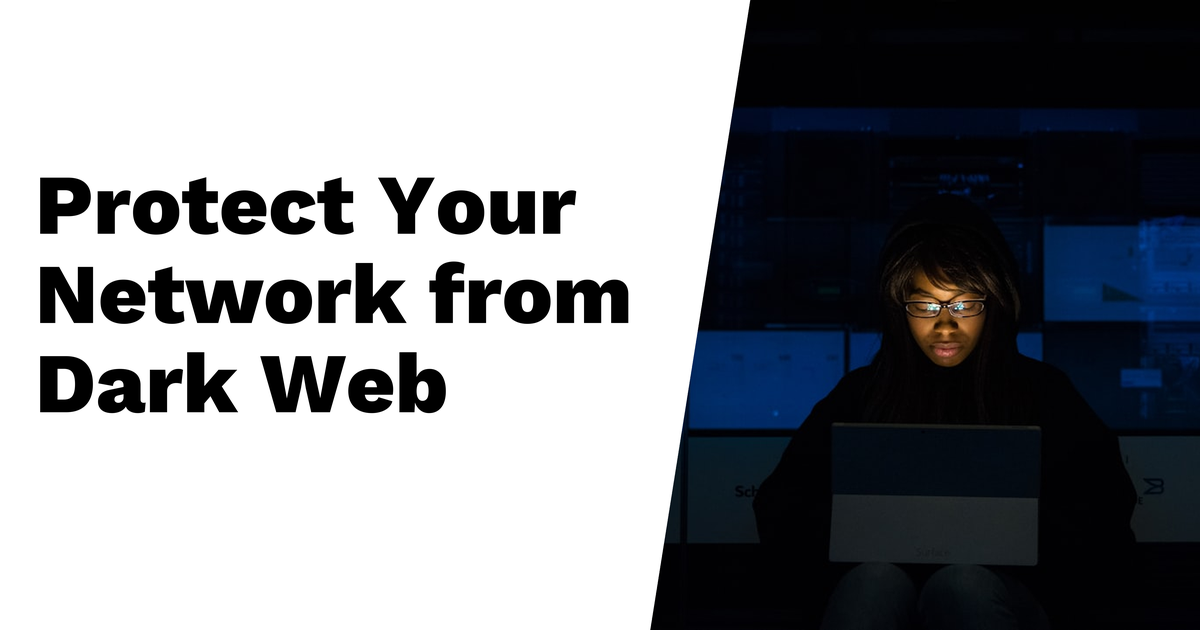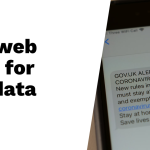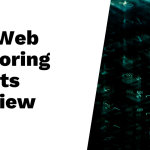Protecting your network from dark web threats in 2025 demands a thorough understanding of the risks. The dark web is notorious for hosting illegal activities, including selling stolen data and hacking tools. To counter these threats, organizations should prioritize dark web monitoring, employing specialized tools that track mentions of leaked credentials and planned attacks. In addition to technology, empowering employees through regular cybersecurity training is vital for recognizing phishing scams and social engineering tactics. Strong password policies and two-factor authentication can also reinforce security. Overall, a proactive approach combining technology with human vigilance offers the best defense against evolving dark web dangers.
Table of Contents
- Understanding Dark Web Threats
- Importance of Dark Web Monitoring
- Key Strategies for Protection
- Proactive Cybersecurity Measures
- Utilizing Advanced Technologies
- Addressing Specific Threats in 2025
- Additional Considerations for Dark Web Security
- Frequently Asked Questions
1. Understanding Dark Web Threats

The dark web is a hidden part of the internet that requires special software like Tor to access. It is a space where cybercriminals thrive, engaging in illegal activities such as trading stolen data, hacking tools, and illicit services. For businesses, this creates a significant risk, as data breaches can result in sensitive information being sold on dark web marketplaces. When companies fall victim to breaches, their customers’ personal data, credit card details, and login credentials may end up for sale, exposing them to identity theft and fraud.
Malware and ransomware are commonly found on the dark web, with many vendors offering these malicious tools for sale. This increases the threat to cybersecurity, as malicious actors can easily acquire the means to launch attacks. Additionally, dark web forums act as discussion platforms where criminals share tactics, collaborate on attacks, and even offer services to one another. Understanding these threats is essential for organizations to develop effective security measures.
The anonymity provided by the dark web complicates efforts to track and prosecute cybercriminals, making prevention more important than ever. Dark web threats are not static; they evolve quickly, necessitating continuous research and adaptation of security strategies. By monitoring dark web activities, companies can gain insights into potential attacks before they occur, allowing for timely and informed responses. Awareness of how the dark web operates also aids law enforcement and cybersecurity professionals in their fight against cybercrime.
2. Importance of Dark Web Monitoring
In 2025, dark web monitoring is not just a good practice, it is essential for businesses aiming to safeguard their sensitive information. By utilizing specialized tools, organizations can discover if their credentials or proprietary data have been compromised and are being traded on illicit platforms. This proactive approach allows for early detection of leaked information, which can significantly reduce the risk of identity theft and financial loss for both businesses and their clients.
Moreover, many cybercriminals openly discuss their plans on dark web forums, which can serve as valuable early warning signals. Monitoring these discussions enables companies to take preemptive measures against potential attacks before they escalate. Regularly scanning the dark web for mentions of company data not only helps maintain a robust security posture but also fosters greater trust among customers who expect their information to be protected.
Automated monitoring systems can alleviate some of the burdens on security teams, ensuring that they remain vigilant without becoming overwhelmed. Additionally, dark web monitoring services can provide insights into trends and threats specific to various industries, allowing organizations to tailor their cybersecurity strategies effectively. By integrating dark web monitoring with existing security measures, businesses can enhance their overall threat detection capabilities, ultimately reducing the likelihood of successful cyberattacks.
3. Key Strategies for Protection

Implementing dark web monitoring tools is essential for safeguarding your organization. These services help identify stolen credentials and other signs of compromise in real-time, allowing you to act quickly before issues escalate. Regularly utilizing dark web threat intelligence can also provide critical insights into emerging risks, helping you adjust your security measures proactively. It’s equally important to conduct employee training sessions that focus on recognizing phishing attempts and social engineering tactics. By fostering a culture of security awareness, you empower each employee to play a vital role in protecting sensitive information.
Establishing incident response plans is another key strategy. These plans should outline clear protocols for addressing dark web threats and breaches, ensuring your team knows how to respond effectively. Collaborating with cybersecurity professionals who specialize in dark web monitoring can enhance your defenses, giving you access to expert knowledge and resources. Investing in security technologies that integrate dark web monitoring with your existing infrastructure will provide comprehensive coverage against various threats. Regular audits of your security measures are crucial to ensure their effectiveness against dark web-originated risks. Staying informed about shifts in dark web trends will help you understand the evolving threat landscape, allowing you to adapt your strategies accordingly. Lastly, engaging with cybersecurity communities can offer valuable insights and successful protection strategies that have worked for others.
- Implement dark web monitoring tools to continuously check for stolen credentials and other indicators of compromise.
- Utilize threat intelligence from dark web sources to understand emerging cyber risks and adjust security measures accordingly.
- Regularly conduct employee training to educate staff on recognizing phishing attempts and other forms of social engineering.
- Encourage a culture of security awareness within the organization, emphasizing the role of each employee in protecting sensitive information.
- Establish incident response plans that include protocols for addressing dark web threats and breaches.
- Collaborate with cybersecurity professionals who specialize in dark web monitoring and threat intelligence.
- Invest in security technologies that integrate dark web monitoring with existing security infrastructure for comprehensive coverage.
- Conduct regular audits of security measures to ensure they are effective against threats sourced from the dark web.
- Stay informed about changes in dark web trends, as they can impact the types of threats organizations face.
- Engage with cybersecurity communities to share experiences and learn about successful protection strategies.
4. Proactive Cybersecurity Measures
To safeguard your network against dark web threats, it’s essential to adopt proactive cybersecurity measures. Start by implementing the principle of least privilege, ensuring that employees only have access to the data necessary for their roles. This reduces the risk of data breaches caused by insider threats or compromised accounts. Next, enforce strong password policies that require complex passwords and regular updates, which can significantly lower the chances of unauthorized access. Encouraging the use of password managers can help employees maintain unique passwords for different accounts, further enhancing security.
Adding two-factor authentication (2FA) is another critical layer of protection, especially for accounts containing sensitive information. Regularly updating and patching software is vital to close vulnerabilities that cybercriminals could exploit. Establish a routine for vulnerability assessments and penetration testing to identify weaknesses before they can be targeted.
Creating a robust data backup strategy is essential for business continuity, especially in the event of a ransomware attack or data breach. Using encryption to protect sensitive data in transit and at rest makes it significantly harder for attackers to access it. Monitoring network traffic for unusual activity can help detect potential breaches early, while engaging in threat hunting exercises allows you to proactively search for indicators of compromise within your network.
5. Utilizing Advanced Technologies
Investing in AI-driven dark web monitoring tools is essential for businesses aiming to stay ahead of threats. These tools can sift through enormous volumes of data swiftly, identifying potential risks before they escalate. By leveraging machine learning algorithms, organizations can enhance the accuracy of their threat detection systems, significantly reducing false positives. Incorporating automation into incident response processes is another vital step, as it allows for quicker reactions to potential dark web threats.
Big data analytics plays a crucial role in this strategy, providing insights into dark web activities and helping to identify patterns that may indicate emerging threats. Establishing a centralized security operations center that integrates dark web monitoring with existing security protocols can streamline threat management. Organizations should also explore the potential of blockchain technology to bolster data integrity and security against tampering, ensuring that sensitive information remains protected.
Adopting a cybersecurity mesh architecture can further improve collaboration between various security tools and systems, allowing for a more cohesive defense strategy. Utilizing threat intelligence platforms that aggregate data from multiple sources, including the dark web, offers a comprehensive analysis of potential threats. Collaborating with third-party vendors who specialize in advanced technologies for dark web monitoring and threat detection can provide additional expertise and resources.
Lastly, it is crucial for organizations to regularly assess and upgrade their technology solutions to keep pace with the evolving landscape of dark web threats, ensuring that their defenses remain robust and effective.
6. Addressing Specific Threats in 2025

As we move into 2025, organizations face specific threats that require immediate attention. Ransomware attacks are poised to rise, with cybercriminals increasingly offering ransomware-as-a-service on dark web forums, making it easier for less-skilled attackers to launch devastating attacks. Credential theft is another major concern, as dark web marketplaces facilitate the buying and selling of stolen credentials, putting many organizations at risk.
Financial institutions must be vigilant, monitoring for compromised banking credentials to react swiftly to any suspicious activity. Additionally, organizations should keep an eye on dark web discussions related to supply chain vulnerabilities, as attacks on vendors can create unexpected entry points for cybercriminals.
Healthcare organizations have to prioritize the protection of patient data, as breaches can have serious consequences for individuals, including identity theft and reputational damage. Moreover, social engineering tactics are evolving, making continuous employee training crucial to help staff recognize new scams and phishing attempts that could lead to data breaches.
Organizations should also develop incident response plans that specifically address risks associated with the dark web, ensuring they are prepared for a swift reaction should a breach occur. Regular engagement with cybersecurity experts can provide valuable insights into emerging threats specific to your industry, allowing for more tailored defenses against these evolving risks.
7. Additional Considerations for Dark Web Security
Establishing a clear policy for responding to dark web threats is essential. This policy should outline roles and responsibilities within your organization, ensuring everyone knows what to do when a threat is identified. Regularly reviewing and updating security policies is equally important, as it helps align your defenses with the current threat landscape and best practices. Consider engaging external cybersecurity firms for assessments to enhance your internal capabilities; their expertise can provide valuable insights.
Partnerships with law enforcement and other organizations can boost your threat intelligence. Sharing information about dark web trends creates a collaborative environment that benefits all parties involved. Additionally, staying informed about legislative changes related to cybersecurity practices is crucial, as these changes can impact how you protect your data from dark web threats.
Utilizing public resources and forums can help you stay updated on dark web developments. These platforms often provide insights into emerging threats that may not yet be widely recognized. Cultivating a culture of transparency within your organization encourages employees to report suspicious activities without fear of reprisal, fostering an environment of vigilance.
Investing in cybersecurity insurance is a proactive step to mitigate financial losses from cyber incidents linked to dark web activities. Regular communication with stakeholders about your dark web monitoring efforts reinforces the importance of these strategies in protecting sensitive data. Finally, adopting a community approach to cybersecurity by sharing knowledge and strategies can enhance overall defense mechanisms against dark web threats.
Frequently Asked Questions
What is the dark web and how does it affect my network?
The dark web is a part of the internet that isn’t indexed by regular search engines. It can host illegal activities, like selling stolen data, which can threaten your network if hackers use this information to attack.
How can I tell if my network has been compromised by dark web threats?
Signs that your network might be compromised include unusual activity, slow performance, or unknown devices connected to your network. If you notice these, it’s a good idea to investigate further.
What steps can I take to protect my network from dark web threats?
To protect your network, use strong passwords, enable two-factor authentication, keep your software updated, and consider using a virtual private network (VPN). These practices can help enhance your network’s security.
How can monitoring the dark web help in network protection?
By monitoring the dark web, you can find out if your data has been sold or stolen. This proactive approach allows you to take necessary actions to secure your network before any real damage occurs.
What tools can I use to safeguard my network against these threats?
There are several tools available, like firewalls, intruder detection systems, and dark web monitoring services. These tools can help detect and block threats from the dark web before they reach your network.
TL;DR In 2025, safeguarding your network from dark web threats is crucial. The dark web facilitates illegal activities like selling stolen data, making monitoring essential. Key strategies include using specialized dark web monitoring tools, leveraging threat intelligence, and training employees on cybersecurity. Proactive measures, such as enforcing strong password policies and conducting regular security assessments, further enhance protection. Employing advanced technologies like AI-driven surveillance and integrating with existing security protocols can improve threat detection. Organizations should stay alert against specific risks like ransomware and credential theft, especially within financial sectors.





